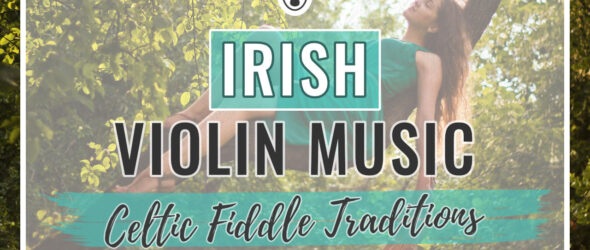Irish violin music is so captivating. The fast rhythms and catchy melodies just work so well on the instrument!
Have you ever wondered how Irish music evolved? Today we’re diving into the history of Celtic fiddle music and discussing the ins and outs of popular types of fiddle tunes.
Ready to learn about Irish violin music? Let’s start with the age-old question…
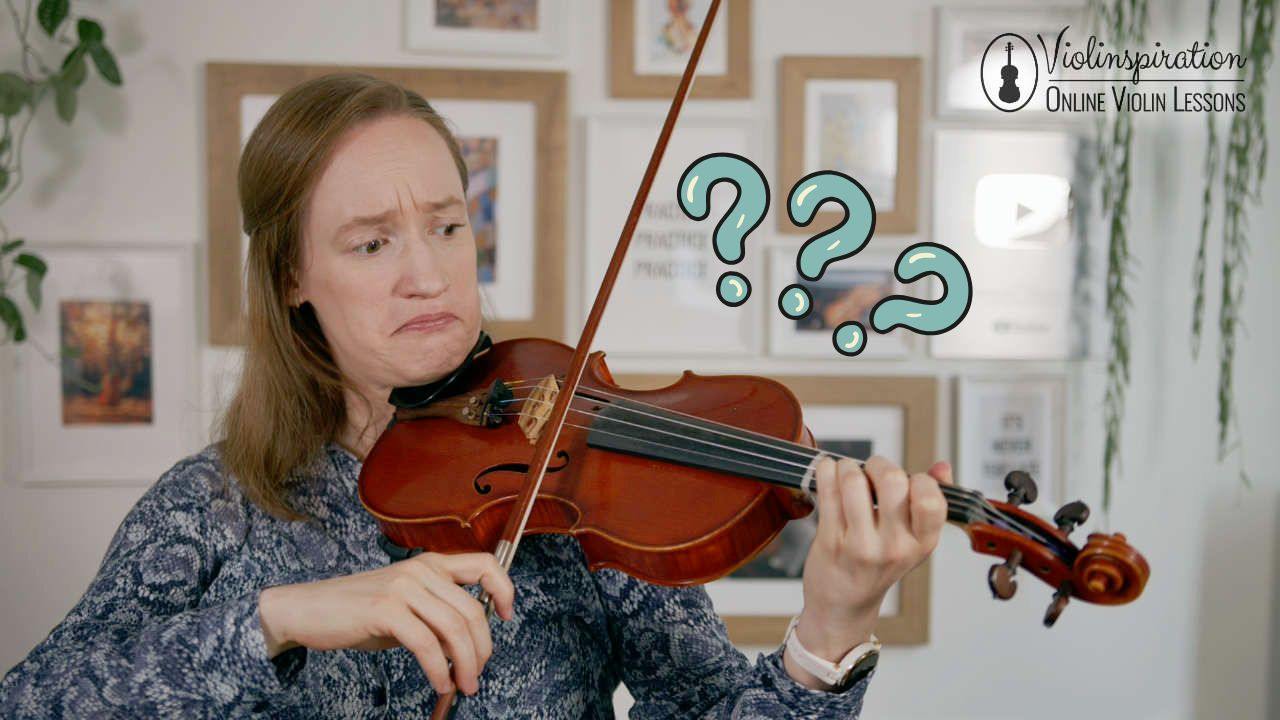
What’s the difference between the violin and the fiddle?
The violin and the fiddle are the same instrument, all that’s different is how it’s played. A violinist plays more classical violin music, while a fiddler plays more folk tunes. Of course, the lines are blurred, and any type of musician can play any genre they like!
If you’d like to learn more about the nuances between the violin and fiddle, you can read my in-depth thoughts here!
The Origins of Irish Fiddle Music
The violin gained popularity in the 1600s as Italian violin makers perfected the instrument. Around that time, the violin made its way to Ireland. It was first seen as an instrument for the upper class to use for classical music, but as it traveled to rural Ireland, natives began using it for their traditional folk music.
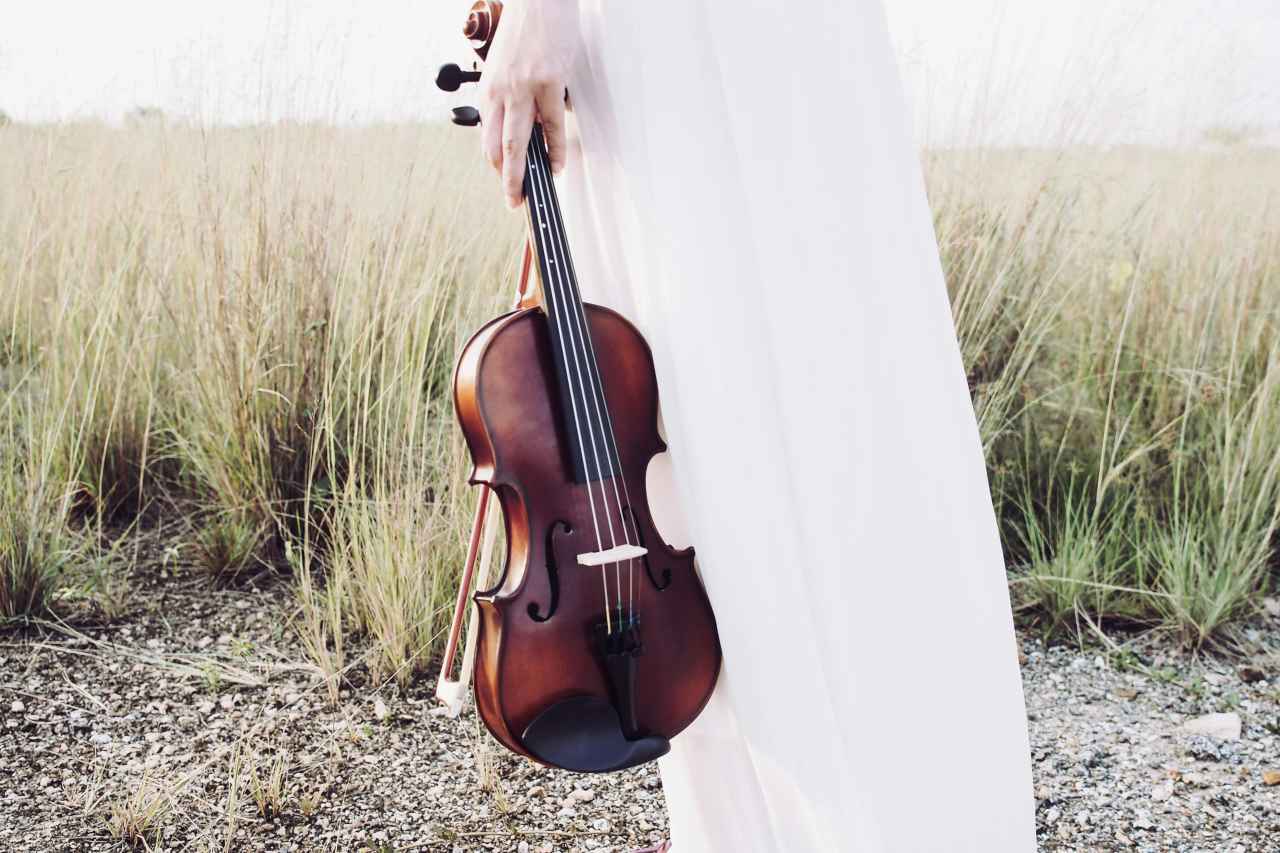
By the 1700s, the violin was a stronghold in Irish music. The versatility of the instrument lends itself perfectly to both dance music and slower, more somber tunes. Fiddle players began developing techniques called ornaments: quick notes and flourishes that embellish the original tune.
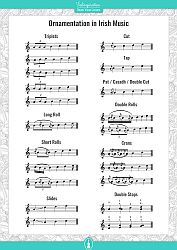
Ornamentation in Irish Music
Free PDF Chart
Regional Styles of Irish Fiddle Music
There are a few regional styles of fiddle music passed down by local cultures mostly by ear.
Donegal Style
Donegal is fairly far north on Ireland’s west coast, and the music that comes from this area is heavily influenced by Scotland and its bagpipe tradition. Their music is fast and bright and usually includes double stops and very articulated bowing techniques.
Sligo Style
The Sligo style is made up of triplets, variations, and plenty of ornaments. Early Irish fiddle recording artists like Michael Coleman, James Morrison, and Brian Conway made this style popular throughout the world.
County Clare Style
County Clare is on the west coast of Ireland and has a vibrant traditional music scene. The Irish fiddling from the area is slower and melancholy with relaxed phrasing. Bow strokes are very fluid, and the music is smooth and flowing.
Kerry Style
The Kerry style is full of energetic rhythms, single bow strokes, and far less ornamentation than the music that comes from County Clare. Polkas and slides are the most popular forms of music from Kerry.
Traditional Forms of Irish Fiddle Music
In addition to regional styles, there are also several types of tunes that make up traditional Irish music. Many of these types of tunes have a corresponding dance, as many traditional songs are played at social events.
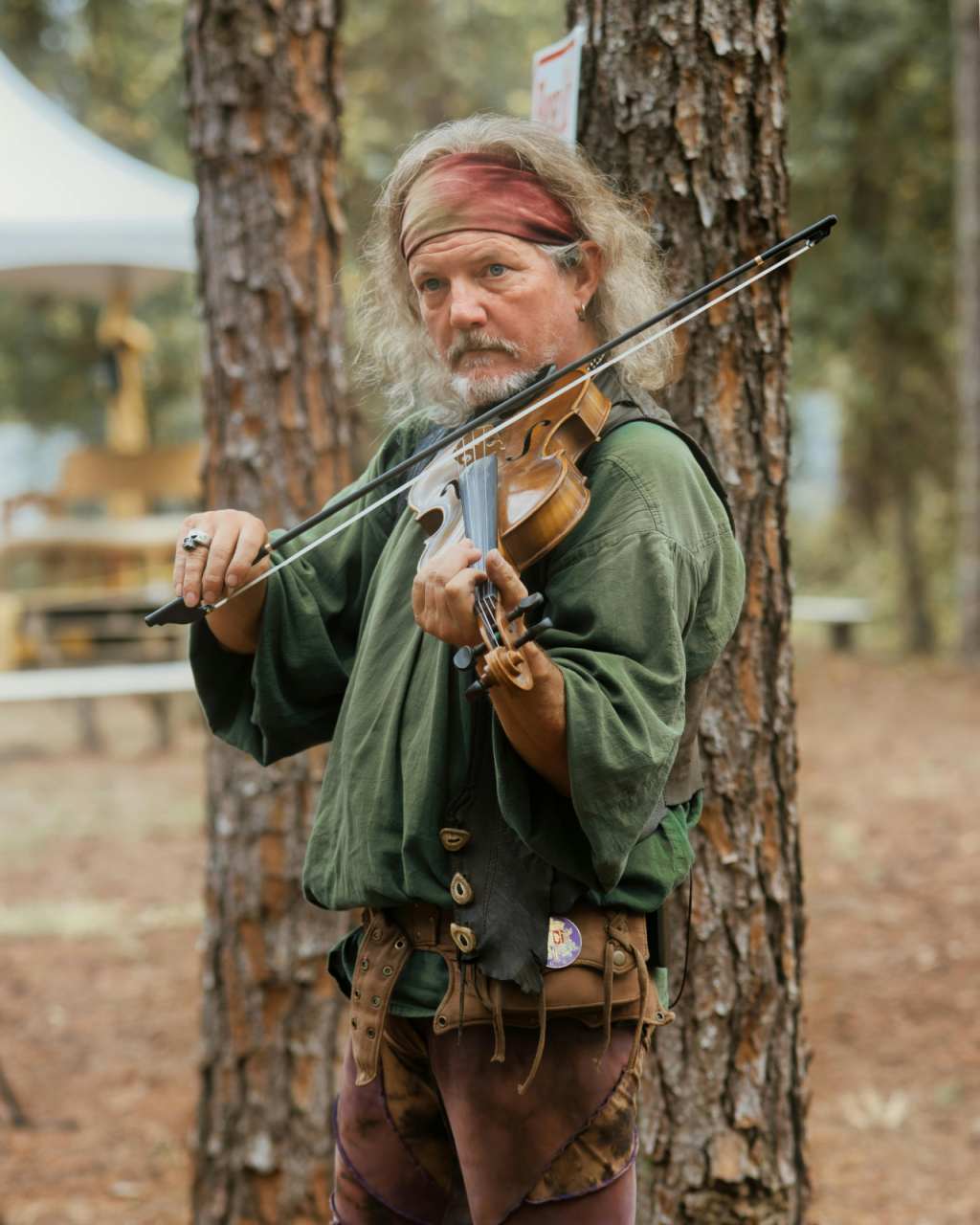
Jigs
First, listen to the famous Kesh Jig:
The most famous form of Celtic fiddle music is the jig. Jigs are quick, energetic dances in 6/8 or 9/8 time. There are a few different types of jigs:
Single jigs are in 6/8 time and contain rhythms of a quarter note followed by an eighth note, creating a long-short pattern. Single jigs are usually fairly simple.
A double jig is also in 6/8 time but is generally made up of constant eighth notes grouped in threes. The music feels like it’s constantly rolling in this type of jig.
The final type of jig is the slip jig. These are a little less common and are played in 9/8 time. Similar to double jigs, slip jigs contain constant eighth notes, but instead of having two groups of three eighth notes per measure, these jigs have three groups of three eighth notes per bar.
Jigs always have two parts: A and B. This is what we call binary form. Each section of the jig is repeated, which gives the music an AABB pattern.
Ornamentation plays a big part in jigs. Rolls, cuts, and grace notes are the most common ornament choices for this type of tune.
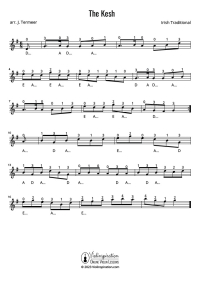
Free Violin Sheet Music
The Kesh – Traditional Irish Jig
Reels
To get an idea of how a reel sound like, listen to Cooley’s Reel/Drowsy Maggie:
Reels are another very popular form of traditional Irish music. This type of tune is lively and quick but has a very different feel from a jig.
The Irish reel is written in 4/4 time and is played at a quick tempo: usually around 100-120 bpm. The focus of this type of tune is less on rhythm and more on the flowing melody. Reels also have a binary form with repeats.
Musicians often add ornamentation to reels, as well. Cuts, rolls, and triplets are the most popular additions to reels. The melody still remains the main focus with just a little extra embellishment.
Hornpipes
Watch this Proudlock’s Hornpipe/The Boys of Blue Hill performance and learn about hornpipes:
Hornpipes are slower than most other forms of traditional tunes and are characterized by dotted rhythms.
This type of tune is played in 4/4 time, but with longer, dotted rhythms. Beats 1 and 3 of each measure are usually accented which gives the music a bit of a lilt. Hornpipes also have a binary (AABB) form.
Ornamentation is also very common in hornpipes. Musicians generally opt for grace notes, rolls, cuts, and triplets. Since the melody is slower, the ornaments stick out more in hornpipes than they do in other tunes.
Polkas
Check out this example of a polka, Britches Full of Stitches:
Our final form of Irish fiddle tunes is the polka. Polkas originated in the Sliabh Luachra region of Ireland and are great for dancing!
Unlike the other types of tunes we’ve discussed, polkas are played in 2/4 time with an emphasis on the first beat of every bar. The music is played at a fast tempo without much ornamentation. Polkas also have a binary form.

Improvisation in Irish Fiddle Music
Traditional music was passed down by ear through the decades and even centuries. Because of this, different versions of tunes go by the same name despite differences in melodies and rhythms.
Many fiddlers also add their own flair to the music they play. Musicians can change notes and rhythms, add ornamentation, and repeat sections extra times to keep the music going.
A lot of Irish music is played in social settings like at parties, pubs, and dances. In these relaxed settings, many musicians will add repeats to let others solo and even improvise on top of the chord progression. Sometimes groups will even blend multiple songs together to keep the music going while changing the melody. This is very common!
Celtic fiddle music is fluid and musicians have the freedom to play it in their unique way. Improvisation is an important part of this style of music.
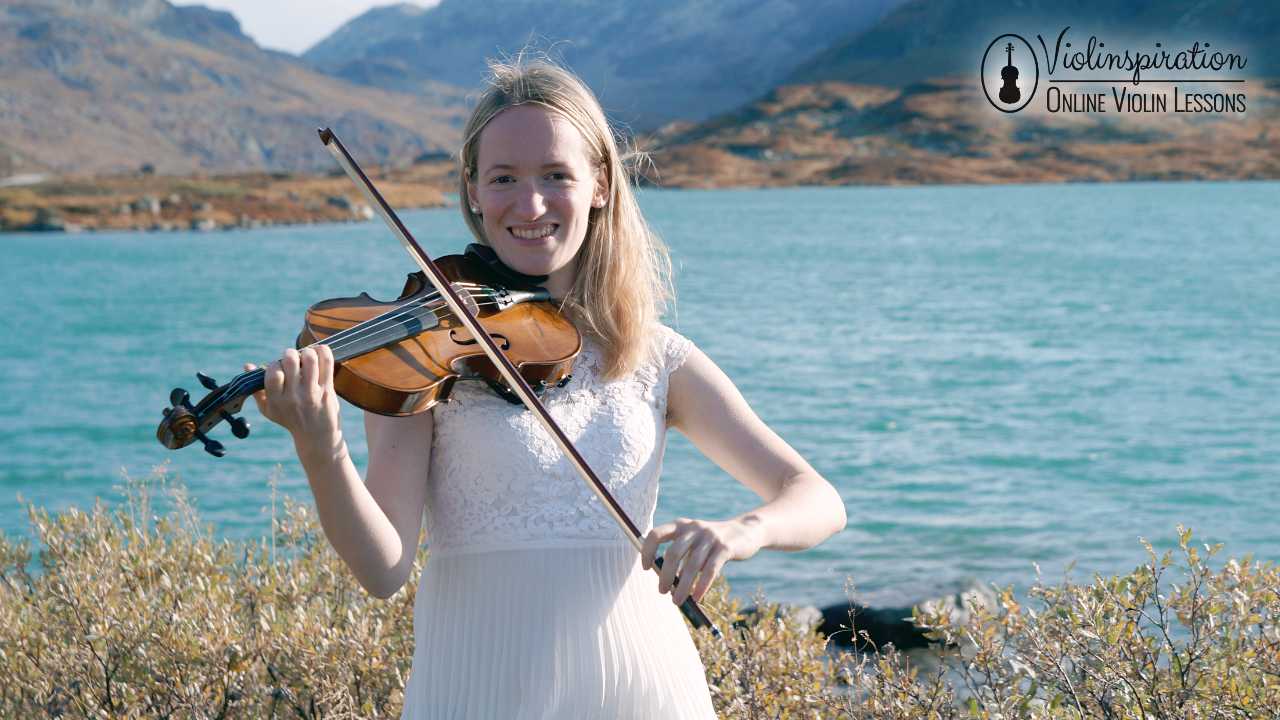
Learn More
Part of the magic of traditional Irish music is the sound of the violin. I hope you have a better understanding and appreciation of the history of this beautiful tradition!
Ready to learn some Irish fiddle tunes? Follow along with my tutorial for Drunken Sailor, or experiment with double stops!
Free Violin Sheet Music in Your Inbox
Subscribe to my mailing list to receive free sheet music, playing tips, a weekly portion of motivation, and never miss a new video or course I release!
